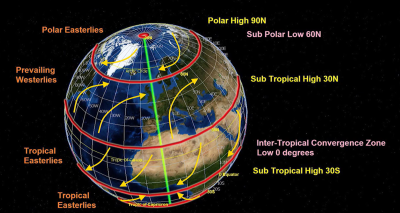What Causes Climate Differences Across Regions?
The world is so vast, with its Northern and Southern Hemispheres and Eastern and Western Hemispheres. Each region experiences different weather, and each continent has a different climate type. What influences climate, and why are there so many different climate types?

- Longitude and Latitude: The Earth is a sphere, and different regions at different latitudes receive varying amounts of solar radiation. Equatorial regions receive the strongest solar radiation and experience higher temperatures, while polar regions receive the least solar radiation and experience lower temperatures. This leads to climate differences between regions at different latitudes.
- Topography and Oceans: Topography and oceans also play a significant role in climate formation. Mountains and plateaus can influence climate formation, for example, by blocking air currents and creating precipitation shadows. Oceans regulate climate, resulting in relatively stable temperatures in coastal areas and greater temperature fluctuations in inland areas.
- Ocean Currents: Ocean currents also have a significant impact on climate. Warm and cold ocean currents influence temperature and precipitation distribution in coastal areas. For example, the North Atlantic Current warms the climate in Western Europe, while the Peruvian Current dries the climate along the west coast of South America.
- Upper Air Circulation: Upper air circulation also influences climate. For example, the Intertropical Convergence Zone and subtropical downdrafts near the equator contribute to hot and humid climates in the equatorial region, while the subpolar high-pressure belt and polar low-pressure belt contribute to cold climates in the polar regions.
- Continental vs. Maritime Climate: Inland areas typically have a continental climate, characterized by hot, dry summers and cold, low winters, with large temperature swings. Regions near the ocean typically have a maritime climate, characterized by relatively cool, humid summers and warm winters.




